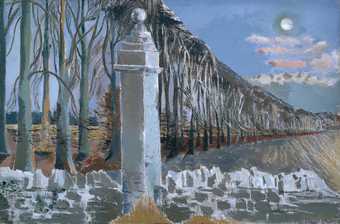
Paul Nash
Pillar and Moon
(1932–42)
Tate
What is he most famous for?
Born in London in 1889, he is most famous for his landscape paintings, which look mysterious and sometimes slightly spooky.
The features in his landscapes often seem to be more than just a tree or a hill. They have characteristics that make them look like animals, people, or other strange creatures. When he was young Paul Nash was fascinated by a group of tall elm trees that grew at the end of his garden. These trees were very old and he thought they looked as if they were
‘Hurrying along stooping and undulating like a queue of urgent females with fantastic hats’.
Do you ever look at things in the landscape like gnarled tree trunks or clouds and think they look like animals, people or monsters?
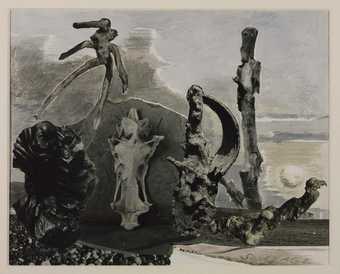
Paul Nash
Swanage
(c.1936)
Tate
He collaged photographs of sticks and other bits of nature. You could have a go at making your own eerie Paul Nash inspired landscape by sticking photos of twigs, leaves and other natural objects with funny shapes to a drawing or photograph of a landscape.
Where did his ideas and style come from?
There were two big things that influenced Paul Nash: abstract art and surrealism.
Abstract art is art that doesn’t try to show accurately how something looks. Artists change how things look to create a particular feeling or emotion. Sometimes they do this by using unexpected colours, shapes or messy brush marks or by changing the perspective and adding objects that look odd.
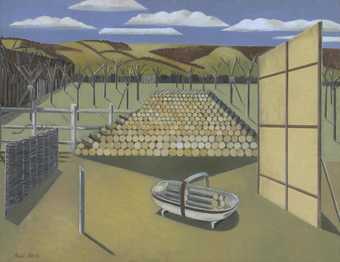
Paul Nash
Landscape at Iden
(1929)
Tate
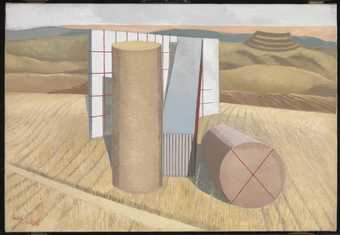
Paul Nash
Equivalents for the Megaliths
(1935)
Tate
The ideas of the surrealists also influenced Paul Nash’s style. The surrealists were a group of artists who, in the 1920s began to make art and creative writing inspired by thoughts that are hidden deep in our brains – that we might not even know we have!
They were interested in the ideas of a famous psychologist called Sigmund Freud. A psychologist is someone who investigates people’s minds and tries to understand how they think. Freud called these hidden thoughts ‘the subconscious’. Sometimes these hidden thoughts appear in our dreams.
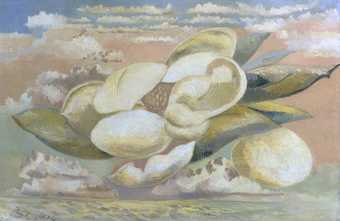
Paul Nash
Flight of the Magnolia
(1944)
Tate
Do you think his pictures looks like a real scene? What words would you use to describe them? How has Paul Nash made the landscapes look a bit strange?
Anything else we need to know?
During both the First and Second World Wars Paul Nash was an official war artist. A war artist is someone paid by the government to paint or draw events that were happening in the war.
Paul Nash’s paintings didn’t just document the war in a straightforward way. In this painting, the huge red watery sunset adds a powerful feeling of sadness to this scene of a crashed plane.
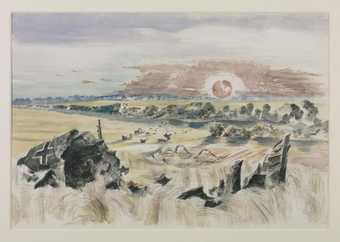
Paul Nash
Bomber in the Corn
(1940)
Tate
The picture below shows one of Paul Nash's most famous paintings. It was painted during the Second World War. It looks a bit like the sea with spiky silvery waves doesn’t it? He called the painting Totes Meer (which is German for Dead Sea). Can you work out what is piled up in this graveyard? Paul Nash called them ‘enchanting monsters’.
Look closely, can you see wings and wheels? The ‘waves’ or 'monsters' are in fact lots of crashed and broken aeroplanes.
Look even more closely and you might see a ghostly white bird flying in the sky…

